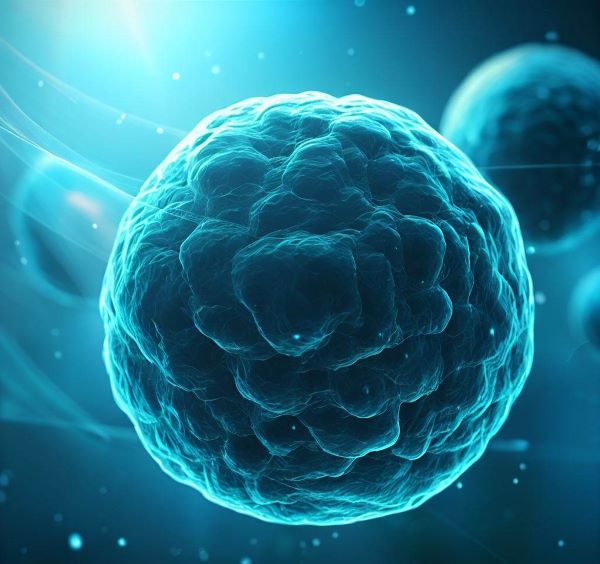
Cancer is a collection of over 200 different diseases that, while distinct, share a common characteristic: the uncontrollable growth and division of cells, leading to the development of a lump, growth, or 'tumor.’ Not all tumors are cancerous. Those that are, are classified as 'malignant,’ while non-cancerous tumors are called 'benign.’
Cancer begins with genetic mutations, changes in the DNA sequence that alter the way a gene functions. There are countless ways that DNA can mutate and cause cancer, making it challenging to pinpoint the source of the problem — the mutated gene and the cellular mechanism it disrupts — for each unique individual.
Genetic Aspects of Cancer
The occurrence of cancer involves a complex interplay of genetic factors, some of which are inherited, while others are acquired over the course of an individual's lifetime.
One such factor is proto-oncogenes (genes that can transform into oncogenes, which are genes with the potential for causing cancer) and tumor suppressor genes (genes that help regulate and prevent the development of cancer by inhibiting cell proliferation or promoting cell death). Mutations in proto-oncogenes can lead to their activation, causing them to become oncogenes that drive excessive cell growth. Conversely, mutations in tumor suppressor genes can lead to their inactivation, removing a critical brake on cell growth.
Apart from genetic mutations, epigenetic changes (modifications that alter gene expression without changing the DNA sequence) can also play a crucial role in cancer development and progression.
Environmental Factors in Cancer Development
Some of the most common environmental factors in cancer development include lifestyle habits (e.g. diet, physical activity, and tobacco or alcohol use), carcinogens (e.g. asbestos, radon, some pesticides, ultraviolet light, and ionizing radiation), and certain pathogens (e.g. human papillomavirus and hepatitis B and C viruses), and pollution.
Additionally, age is a significant risk factor for many types of cancer. The risk of developing cancer increases with age due to the accumulation of genetic mutations over time and the weakening of the body's immune system.
Cancer Treatment Strategies
- Chemotherapy: Chemical agents target all fast-growing cells in the body, which includes cancer cells but unfortunately some healthy cells too. This non-specific targeting is responsible for many of the side effects associated with chemotherapy, such as hair loss, anemia, and an increased risk of infection.
- Radiation Therapy: High-energy radiation destroys cancer cells by damaging their DNA, making it impossible for these cells to continue to grow and divide. However, it can also damage nearby healthy cells, leading to side effects.
- Immunotherapy: This treatment harnesses the power of the patient's immune system to fight cancer. It stimulates the immune system to work harder or introduces immune system components into the body.
- Targeted Therapy: Targeting specific genes or proteins that are involved in the growth and survival of cancer cells, reducing harm to healthy cells.
- Surgery: In some cases, cancer can be removed physically from the body. However, this method is only effective if the cancer hasn't spread to other parts of the body.
Combination therapies are also being increasingly employed. By using multiple modalities, the chance of all cancer cells escaping treatment is significantly reduced.
Challenges in Cancer Treatment
- Difficulty in Early Detection: Many cancers do not show noticeable symptoms until they are in advanced stages, and the later cancer is diagnosed, the more difficult it is to treat effectively.
- Heterogeneity of Cancer Cells: Cancerous tumors are often composed of a variety of different cell types. This means that what works for one type or group of cells within the tumor might not work for another. Furthermore, cancer cells can mutate and evolve over time, which means a treatment that was initially effective may become less so as the disease progresses.
- Cancer Stem Cells (CSCs): These cells have the ability to give rise to all cell types found in a particular cancer sample, which can lead to relapses and metastases. CSCs are often resistant to conventional treatments.
- Drug Resistance: Cancer cells can become resistant to treatments, especially after prolonged exposure. This can lead to the recurrence of the disease, often in a form that is more difficult to treat.
- Impact on Healthy Cells: Current treatments often affect not just the cancer cells but also healthy cells in the body.
- Cancer Metastasis: Cancer cells can spread from the original tumor to other parts of the body through the blood and lymph systems, a process known as metastasis.
- Lack of Effective Biomarkers: Biomarkers are used in medical research to indicate the presence or risk of disease, or to predict response to treatment. In cancer, the lack of effective biomarkers for some cancers complicates early diagnosis and the ability to effectively monitor response to treatment.
What Does "Curing Cancer" Mean?
In the context of cancer, a cure implies that treatment has eradicated the cancer entirely. It signifies that no further treatment is required, and the cancer is not expected to recur.
Remission refers to a period when the cancer is responding to treatment or is under control. In a complete remission, all signs and symptoms of cancer have disappeared, and cancer cells can't be detected by tests. In a partial remission, the cancer has shrunk but hasn't completely disappeared. Remissions can last from weeks to years.
In many cases, the best a patient can hope for is to keep their cancer under control. Thus, curing cancer doesn't necessarily mean eliminating every single cancer cell from the body. Instead, it often involves managing the disease to the point where it doesn't affect the patient's quality or length of life.
LIDE delivers innovations in oncology translational research and immuno-oncology. Contact Global Vice President, Josh Caggiula today to learn more about our first-class research capabilities.